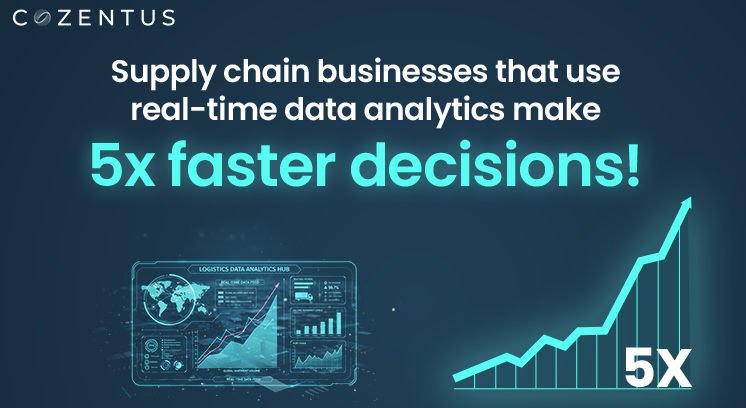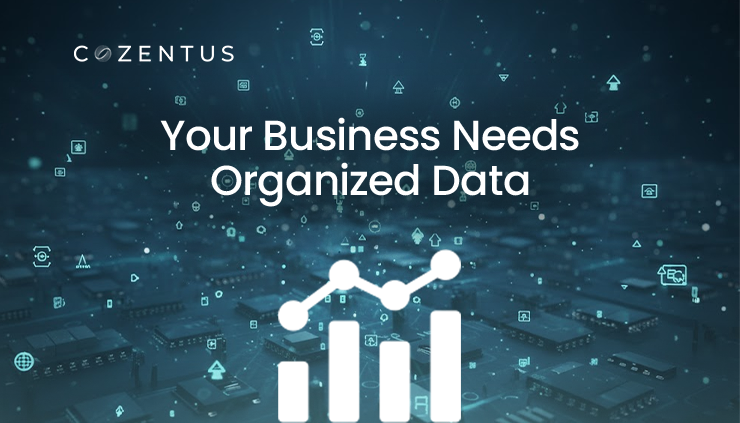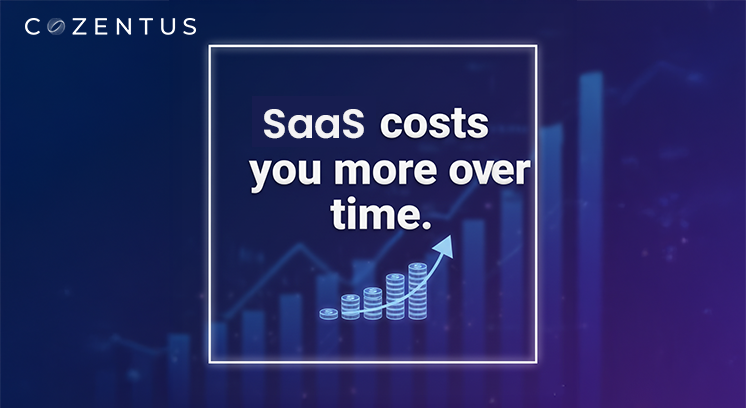Most Companies Struggle to Use Their Data Correctly
Let’s face it. Most companies today have too much data and too little clarity.
Every system collects something. Shipment details, purchase orders, customer records, invoices, and tracking updates - all flow in from multiple places. Each has its own format and timing. By the time you try to make sense of it all, the numbers no longer match, and decision-making slows down.
For supply chain and logistics leaders, this challenge is even bigger. You are managing data from carriers, warehouses, ERP systems, and external partners. Without a single, unified view, it becomes difficult to find what is true and what is outdated.
At Cozentus, we have seen this happen repeatedly across global logistics and enterprise environments. The solution is not more data. The solution is a stronger data foundation.
That foundation is ETL (Extract, Transform, Load) and Data Warehousing. Together, they turn scattered data into a single, trusted source that leaders can rely on for faster and smarter decisions.

The Challenge: Too Much Data and Not Enough Clarity
In most organizations, the problem is not a lack of data. The problem is that it sits in too many disconnected systems.
Each department creates its own reports using its own tools. Finance has one version of a number, logistics has another, and operations has a third. No one knows which one is correct.
This leads to:
- Delays in reporting and decision-making
- Conflicting insights across departments
- Manual work that wastes time and effort
- Depending more on IT teams for even small reports
In supply chain environments, this confusion can have a big impact. For example, when data from transport management and warehouse systems do not match, shipment tracking or freight reconciliation can take days. By the time an issue is identified, it has already affected service levels or costs.
That is what ETL and data warehousing solve. They take your raw data, organize it, and deliver it in a clear, usable form.
What are ETL and Data Warehousing
Let’s break these two terms into simple words.
What ETL Means
- ETL stands for Extract, Transform, and Load. It means collecting data from multiple systems, cleaning and reformatting it, and then storing it in one place where everyone can access it easily.
- ETL ensures that every piece of data, whether it comes from ERP, TMS, CRM, or Excel, follows the same rules and structure.
What Data Warehousing Means
- A data warehouse is like your company’s single version of truth. It stores all the cleaned and organized data so you can run dashboards, generate reports, and feed analytics tools.
- It helps you see the entire business clearly without jumping between multiple systems.
Together, ETL and data warehousing make data accurate, fast, and reliable.
ETL and Data Warehousing Increase Supply Chain Success
Data is the backbone of modern supply chain management. But most leaders do not have the time to check every report or verify every number. You need quick, accurate answers.
ETL and data warehousing make that possible by:
- Creating unified visibility across departments and systems: Brings all data together from procurement, transport, warehousing, and finance into a single view, so you can see your entire operation clearly and in real time. This allows teams to make faster, data-backed decisions based on one shared view of the business.
- Eliminating duplicate and inconsistent data: Ensures that every department works with the same version of the truth. This removes confusion caused by manual updates or mismatched records. With accurate data, reports are more reliable and performance tracking becomes easy.
- Reducing the time to generate reports from days to minutes: Automates report generation so leaders get accurate insights instantly, instead of waiting for IT or manual consolidations. This speeds up daily operations and helps teams respond quickly to changing business needs.
- Supporting predictive analytics and forecasting: Creates clean, structured data that helps predict demand, track performance, and spot future trends. This prepares businesses to plan ahead, reduce risks, and make smarter long-term decisions.
- Reducing IT dependency for business insights: Empowers business users to access and analyze information directly without relying on technical teams for every data request. This improves efficiency and allows decision-makers to act quickly using real-time insights.
For logistics companies, this means knowing where delays might occur before they happen, identifying underperforming routes, and understanding true costs in real time.

A Real Example of this Success
A leading global logistics provider approached Cozentus with a common challenge. Their operations data came from multiple systems, and each team maintained its own spreadsheets. It took over a week to prepare simple performance reports.
Cozentus implemented a modern ETL and Data Warehousing solution that automated data collection and standardization across all their systems. Within a few weeks:
- Reporting time was reduced by 80%
- Data accuracy improved by 93%
- Teams no longer needed to merge files manually
- Leaders got real-time visibility into their operations
This might be useful: AI-Driven Test Automation - Predict Failures Before They Happen
How Cozentus Delivers the Best Results
At Cozentus, we help organizations build reliable data foundations that drive real business outcomes.
Our approach includes:
- Custom ETL Pipelines: Connect all data sources and automate data transformation.
- Modern Data Warehousing: Scalable cloud or hybrid environments that handle real-time data.
- AI and Analytics Enablement: Turn your data into intelligent insights and predictions.
- Data Quality and Governance: Ensure accuracy, security, and compliance at every level.
- Dashboard and Visualization: Deliver easy-to-read reports and KPI dashboards for every business user.
Whether your goal is to track freight costs, analyze vendor performance, or optimize operations, Cozentus ensures your data works for you in the best way possible.
The Business Advantage of Having Data Clarity
When your data is clear, your decisions are faster and more confident.
With the right ETL and data warehousing setup, you can:
- Identify risks before they escalate
- Understand cost drivers instantly
- Track operational performance in real time
- Plan better based on accurate forecasts
Instead of asking “what happened,” your teams can start asking “what’s next.”
Final Thought: Build the Future on a Strong Data Foundation
The future belongs to companies that treat data as a strategic asset. AI, Machine Learning, and Predictive Analytics can only work if the data behind them is consistent and reliable.
ETL and data warehousing are not just backend processes. They are the foundation for automation, analytics, and digital transformation.
We help you lay that foundation by connecting every data source, cleaning every dataset, and turning it into a single view of truth that your business can trust.
If your team spends more time collecting and cleaning data than using it, it is time to rethink your approach. ETL and data warehousing bring order to the chaos and give supply chain leaders a clear view of their business in real time.
Want your data to give you better results? Start Here
Recent Post
Subscribe to our newsletter
Stay updated on latest trends and news in the supply chain and logistics industry







